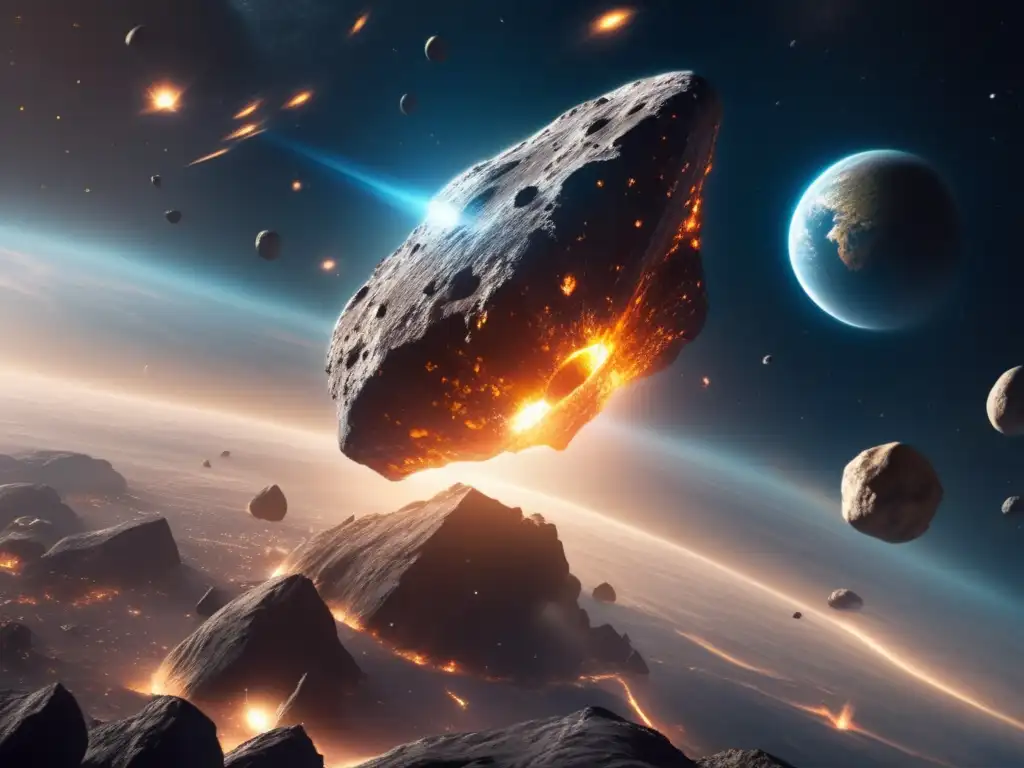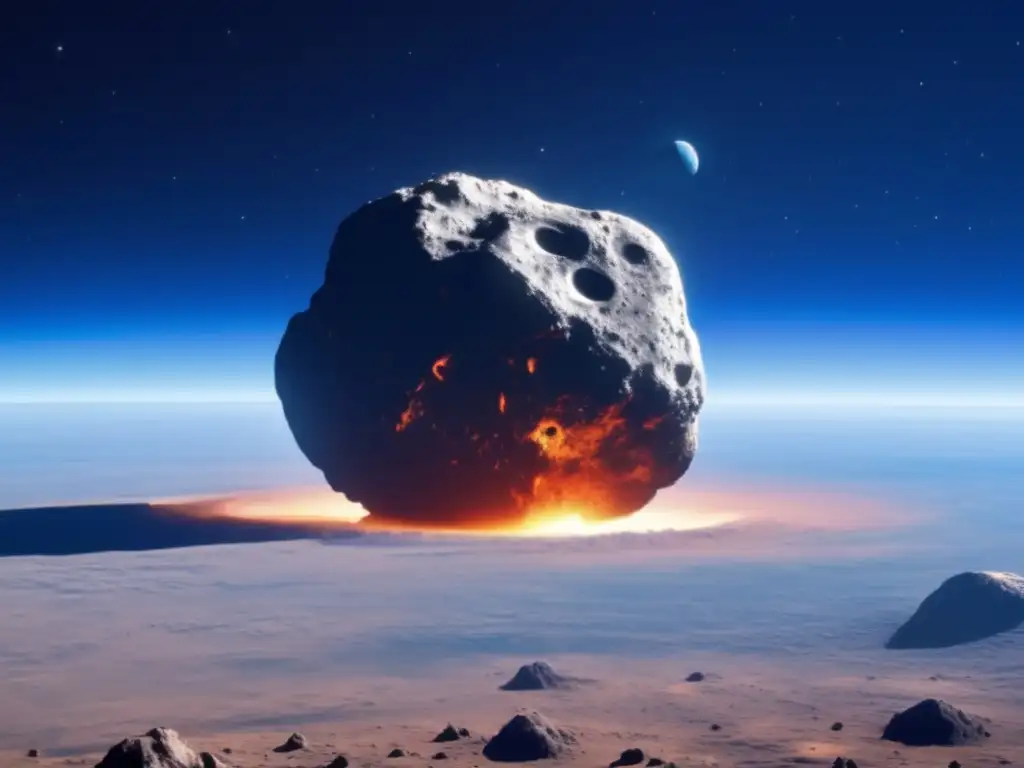Earth’s Security: Current Measures Against Asteroid Threats

Introduction
For years, scientists have been concerned about the possibility of an asteroid impact on Earth. The risk of an asteroid hitting our planet is real, and it could have catastrophic effects on life as we know it. However, there are measures currently in place to help mitigate this risk. In this article, we will explore some of the current measures in place to protect our planet.
The Asteroid Detection Program

What is the Asteroid Detection Program?
The Asteroid Detection Program was established by NASA with the goal of detecting, tracking, and characterizing near-Earth asteroids and comets that could pose a threat to our planet. The program uses a combination of ground-based telescopes and space-based observatories to detect and track these objects.
How does the program work?
The program works by using telescopes to scan the night sky for any moving objects. As asteroids move at different speeds and in different directions than stars, astronomers can identify them by their motion. Once an asteroid is detected, its orbit is calculated to determine if it is a threat to Earth. If it is determined to be a threat, steps are taken to study the object further and determine how best to mitigate the risk.
What has the Asteroid Detection Program accomplished so far?
The Asteroid Detection Program has discovered over 95% of near-Earth asteroids larger than 1 kilometer, and about 25% of asteroids larger than 140 meters. This means that scientists have a good understanding of the larger asteroids that could pose a significant threat to Earth. However, there is still work to be done to detect smaller asteroids that could still cause damage.
The Asteroid Deflection Mission

What is the Asteroid Deflection Mission?
The Asteroid Deflection Mission is a joint effort by NASA and the European Space Agency (ESA) to develop technology that could deflect an asteroid on a collision course with Earth. The mission aims to demonstrate the use of a kinetic impactor spacecraft to redirect an asteroid’s trajectory away from Earth.
How would the mission work?
The mission would involve sending a spacecraft to intercept an asteroid and collide with it at high speed. The impact would change the asteroid’s speed and direction, causing it to miss Earth. The mission would also provide valuable data on the effectiveness of impactors in deflecting asteroids.
When will the mission be launched?
The mission is currently in the planning stages, and a launch date has not yet been set. However, the target launch window is between 2020 and 2024.
The Emergency Management Plan

What is the Emergency Management Plan?
The Emergency Management Plan is a set of procedures developed by NASA and other organizations to prepare for and respond to an asteroid impact on Earth. The plan outlines steps to be taken before, during, and after an impact to minimize the loss of life and property.
What are some of the measures included in the plan?
The plan includes measures such as evacuation procedures, emergency communications, and search and rescue operations. It also outlines steps to be taken to ensure continued access to food, water, and medical supplies in the event of an impact.
Is the Emergency Management Plan regularly updated?
Yes, the plan is regularly updated as new information and technology become available. It is important to ensure that the plan remains effective and up-to-date to reduce the risk of a catastrophic impact on Earth.
Frequently Asked Questions

-
How likely is an asteroid impact on Earth?
While the risk of an asteroid impact is real, the likelihood of such an event occurring is low. However, it is important to be prepared for the possibility.
-
What would happen if an asteroid hit Earth?
The effects of an asteroid impact would depend on the size and speed of the asteroid. A large asteroid could cause widespread destruction and loss of life, while a smaller asteroid could still cause damage to buildings and infrastructure.
-
Are there any asteroids currently on a collision course with Earth?
No, there are no known asteroids on a collision course with Earth at this time. However, new asteroids are constantly being discovered, so it is important to continue monitoring the sky for potential threats.
-
Is there anything individuals can do to prepare for an asteroid impact?
Individuals can prepare for an asteroid impact by following emergency preparedness guidelines, staying informed about potential threats, and supporting efforts to detect and mitigate asteroid risks.
-
What other measures are being taken to protect Earth from asteroid impacts?
In addition to the measures discussed in this article, there are ongoing efforts to study asteroids and develop new technologies for asteroid detection and deflection.
Conclusion
The risk of an asteroid impact on Earth is real, but there are measures in place to help mitigate this risk. The Asteroid Detection Program, the Asteroid Deflection Mission, and the Emergency Management Plan are all important tools in protecting our planet. It is important that we continue to support these efforts and work towards ensuring the security of Earth.
Thank you for taking the time to read this article. We encourage you to share your thoughts in the comments section and to positively interact with www.asteroidrealm.com, whether by subscribing, sharing the article on social networks, or other forms of participation.
Additional Resources

For more information on asteroid detection and mitigation:
- NASA Planetary Defense Coordination Office
- ESA Asteroids and Comets
- NASA Center for Near-Earth Object Studies
 Protecting The Planet: Planetary Defense Against Asteroids
Protecting The Planet: Planetary Defense Against Asteroids In Our Defense: Tools And Strategies For Asteroid Diversion
In Our Defense: Tools And Strategies For Asteroid Diversion Future Shield: Technologies In The Fight Against Asteroids
Future Shield: Technologies In The Fight Against AsteroidsIf you want to discover more articles similar to Earth’s Security: Current Measures Against Asteroid Threats, you can visit the Planetary Defense category.
Leave a Reply

Articulos relacionados: